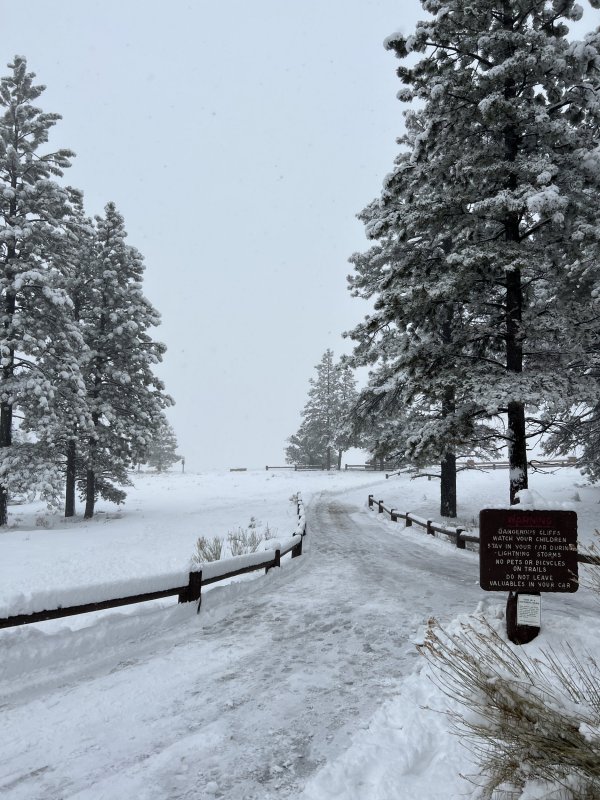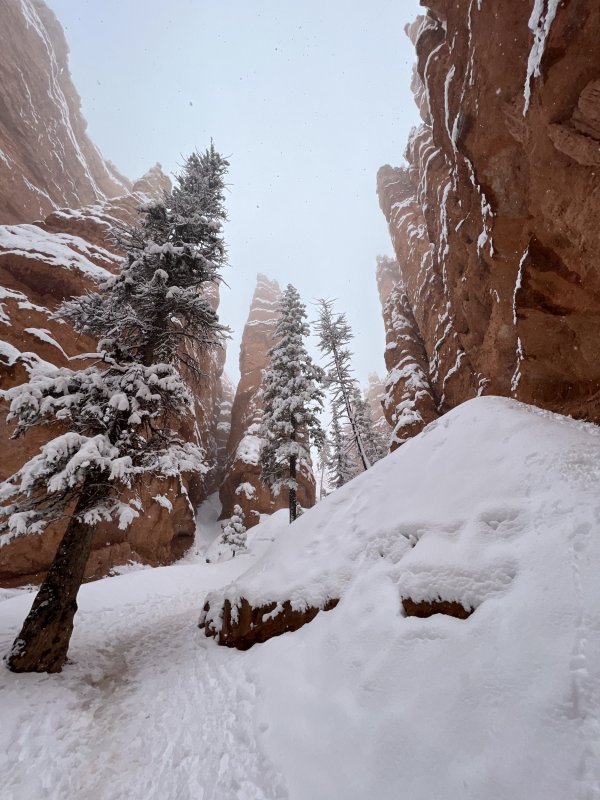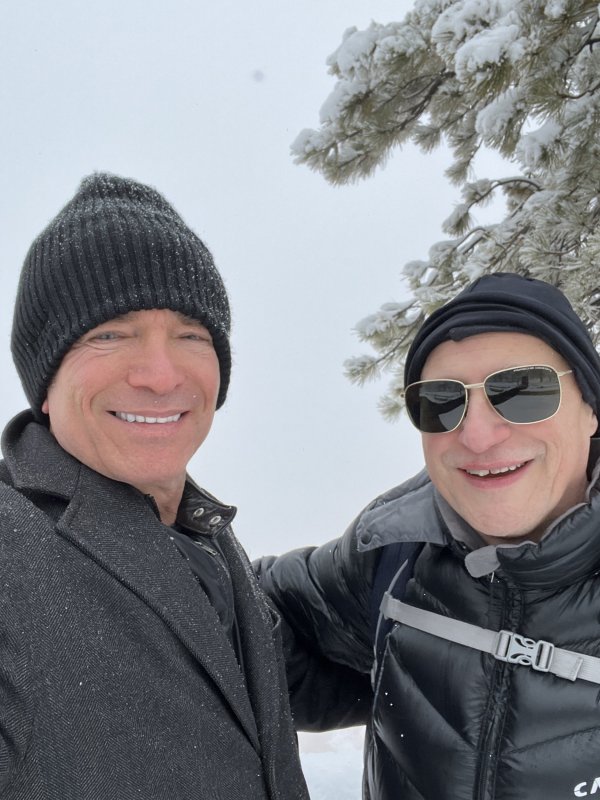I just visited David for five days around New Year’s Eve. From music listening and audiophile points of view this effectively was my first experience with David’s audio system.
1) It was very fun to see “my” turntable — a Vintage Audio Specialities (“VAS”) AS-2000— for the first time! Exactly as PeterA has reported, the machining and metal finishing quality looks literally perfect. Despite its weight, it is as simple as a turntable gets.
I am glad that I ordered the VAS Nothing racks with all stainless steel shelves. Combined with the all stainless steel turntable, the whole set-up should be quite a sight. Of course that would not matter if I didn’t love the sound.
2) David showed me how to operate the system, and then he let me listen for hours. These tracks were in heavy rotation:
“Hallelujah” by Jeff Buckley, Grace (Columbia)
“Landslide,” “Monday Morning,” “Crystal,” and “Rhiannon” by Fleetwood Mac, Fleetwood Mac (MFSL)
“Send in the Clowns" by Bill Henderson, Live at the Times (Jazz Planet Records/Classic Records)
”I've Got the Music in Me" by Thelma Houston, I've Got the Music in Me (Sheffield Lab 2)
“Night on Bald Mountain” and “Pictures at an Exhibition,” The Power of the Orchestra, Rene Leibowitz, RPO (Chesky RC30)
"First We Take Manhattan,” "Bird on a Wire,” “Famous Blue Raincoat” and “Song of Bernadette” by Jennifer Warnes, Famous Blue Raincoat (Rock the House Records/Classic Records)
Bill Evans’ Waltz for Debby
Van Cliburn Rachmaninoff Piano Concerto No. 3 Symphony of the Air, Kiril Kondrashin LSC – 2355
Mozart Jupiter Symphony No. 41, George Szell, The Cleveland Orchestra
Mozart Jupiter Symphony No. 41, Bruno Walter, Columbia Symphony Orchestra
Mozart Jupiter Symphony No. 41, Collegium Aureum, harmonia mundi
Berlioz Symphonie Fantastique, George Solti, Chicago Symphony Orchestra
“Refugee,” by Tom Petty and the Heartbreakers, Damn the Torpedoes (Backstreet Records)
“Don't Let the Sun Go Down on Me,” and “Saturday Night’s All Right for Fighting” by Elton John on a greatest hits album.
“Beat It,” “Billy Jean,” “Human Nature,” and “Thriller” by Michael Jackson, Thriller (Columbia Records)
“Who Can it Be Now” by Men At Work, Business as Usual (Columbia Records)
Musica Nuda “Eleanor Rigby” and “Roxanne” (Fone)
3) The wide mouth horn in front of the Bionors’ dual drivers just throws 500 Hz and down in large, wide and tall waves of sound that make for a very realistic presentation of all acoustic instruments, both brass and string. The Bionors project a huge sound-field that envelops you. I think it is somehow almost planar-like in openness and effortlessness.
I hear this as a contrast to the tightly-wrapped sound of heroically inert box loudspeakers. As with planars I hear the sound emanating from the Bionors as untethered to the speakers. The presentation sounds different to me than trying to squirt most of the frequency range of an orchestra through one or two small, midrange dynamic drivers.
On “Saturday Night’s All Right for Fighting” the long, across-the-keys piano stroke sounds more like a piano than I have ever heard on any other system. I have never before heard the guitar solo in “Beat It” sound this involving, energetic and realistic.
4) I now believe that prior to this visit to David I had never before heard a vdH cartridge set-up properly. I have reported repeatedly based on at least eight listening sessions across at least four systems that I hear unnatural brightness and sibilance and excessive treble energy from the vdH Colibri cartridges. David has said that this means that the cartridges simply are not perfectly aligned. I did not believe David.
David is correct. At David’s the vdH Master Signature cartridge does not exhibit much, if any, of the brightness or sibilance or excess treble energy of which I have accused Colibris repeatedly. Is this impression because the Bionors sound to some listeners rolled off in the high frequencies compared to Magico and YG loudspeakers? That could be a part of it, but that cannot explain away all of the sibilance and edginess I have reported previously, including on vintage (JBL Hartsfield) and vintage-sounding (Tannoy Westminster RG) loudspeakers. Still, out of caution, I personally would not pair a vdH Colibri with a hot-sounding tweeter. For some reason, only David, it appears, knows how to adjust perfectly a vdH Colibri.
5) The Neumann DST sounds more in-the-room-real and “alive” and present than the vdH Master Signature. It’s not a huge difference quantitatively, but, in this hobby, I consider it a significant difference qualitatively. There is a noticeable increase in believability with the DST.
6) “Send in the Clowns” and Bill Evans’ Waltz for Debby were head-shakingly remarkable: a greater suspension of disbelief of being in a live jazz club than anything I’ve ever heard in my entire life. You are in the jazz club. Sonically, it is something out of the Star Trek Holodeck. When you stand behind the speakers it sounds like you’re in the hallway next to the jazz club venue room.
7) David’s Bionors confirm my long-held view that there is something about the way that horn loudspeakers, especially large horn loudspeakers, move air that is consonant with the way that musical instruments themselves propagate their sounds to the air surrounding them.
This is why I believe, pursuant to my speaker prediction theory (that with enough live music experience, and with enough stereo auditioning experience, musical genre preference eventually drives loudspeaker preference) that many jazz aficionados and chamber music aficionados eventually find their way to horn loudspeakers
.
8) The entire system together is wholly less electronic-sounding than the contemporary high-end systems to which many of us are accustomed and which many audiophiles use as their references.
9) On vocals and rock and pop I sometimes preferred the closer listening position of David’s coffee table rather than the primary listening chair.
10) I’ve been moving in this philosophical and preference direction for a while, but I am just done with most of the low-sensitivity, multi-way, complex-crossover, heavily-damped, heroically inert cabinet box speakers driven by most solid-state electronics. These speaker/amplifier combinations simply don’t produce sound that I find emotionally-engaging. There are just too many better and easier and often less expensive ways to get closer to the sound I hear at Walt Disney Concert Hall.
11) I heard no steely resonance from the AS-2000. I listened for this on the Bionors, and I listened for this on another of David’s speakers, which are very neutral in perceived frequency response and which have a very contemporary sound.
12) On jazz music and on classical symphony orchestra music David’s system affords me the greatest suspension of disbelief, the closest to what I hear at Walt Disney Concert Hall, that I have ever heard.
13) The system also is amazing on rock music. Drums and electric guitar are very engaging. It is not terribly difficult to imagine lead singers and guitarists and drummers stepping out from behind the speakers.
14) Transparency of vocals, as compared to transparency of vocals on Magnepans and Martin-Logans, remains an open question for me.
15) It’s as if we learn, and become accustomed to, not only the sonic attributes of modern loudspeakers and modern systems, but also the concept of the sound of modern loudspeakers and modern systems. And I think it’s a little bit hard for some people to unlearn that sonic “language” and expected sonic attributes.
I continue to feel, for my ears and subjective sonic references, that “black backgrounds” and “clearly delineated sonic images” and “pin-point imaging” are not things I hear at Walt Disney Concert Hall. I think these are hi-fi artifacts, often generated conscientiously by electronics, that we have learned to listen for. I don’t hear these sonic attributes on David‘s system.
I also don’t hear these sonic attributes on my temporary Magnepan + subwoofers system. The Magnepans, to me, exhibit the more diffuse sound and the more natural tonal balance of vintage, and the driver continuity of two-way speakers, without hi-fi attributes. Unfortunately, Magnepans are not high sensitivity, and so they don’t exhibit the lightning quick dynamics and jump factor I hear from most horn loudspeakers. Also, I think sometimes Magnepans create exaggerated image sizes.
16) We spent the afternoon yesterday hiking in Bryce Canyon in the snow. It was a beautiful winter wonderland! David said that it hasn’t snowed like this in a couple of years. See photos below.
17) A huge thanks to David and Kana for hosting me for five days. But “hosting me” doesn’t begin to describe the incredibly gracious and generous and hospitable manner in which they cooked every meal and made me feel totally like a member of the family. It’s like a gourmet restaurant at the Karmeli household!
18) This trip proved, yet again, that, for me, the most important aspect of this hobby is the lifelong friendships this hobby places us in a position to cultivate and to cherish. Thank you, David.





1) It was very fun to see “my” turntable — a Vintage Audio Specialities (“VAS”) AS-2000— for the first time! Exactly as PeterA has reported, the machining and metal finishing quality looks literally perfect. Despite its weight, it is as simple as a turntable gets.
I am glad that I ordered the VAS Nothing racks with all stainless steel shelves. Combined with the all stainless steel turntable, the whole set-up should be quite a sight. Of course that would not matter if I didn’t love the sound.
2) David showed me how to operate the system, and then he let me listen for hours. These tracks were in heavy rotation:
“Hallelujah” by Jeff Buckley, Grace (Columbia)
“Landslide,” “Monday Morning,” “Crystal,” and “Rhiannon” by Fleetwood Mac, Fleetwood Mac (MFSL)
“Send in the Clowns" by Bill Henderson, Live at the Times (Jazz Planet Records/Classic Records)
”I've Got the Music in Me" by Thelma Houston, I've Got the Music in Me (Sheffield Lab 2)
“Night on Bald Mountain” and “Pictures at an Exhibition,” The Power of the Orchestra, Rene Leibowitz, RPO (Chesky RC30)
"First We Take Manhattan,” "Bird on a Wire,” “Famous Blue Raincoat” and “Song of Bernadette” by Jennifer Warnes, Famous Blue Raincoat (Rock the House Records/Classic Records)
Bill Evans’ Waltz for Debby
Van Cliburn Rachmaninoff Piano Concerto No. 3 Symphony of the Air, Kiril Kondrashin LSC – 2355
Mozart Jupiter Symphony No. 41, George Szell, The Cleveland Orchestra
Mozart Jupiter Symphony No. 41, Bruno Walter, Columbia Symphony Orchestra
Mozart Jupiter Symphony No. 41, Collegium Aureum, harmonia mundi
Berlioz Symphonie Fantastique, George Solti, Chicago Symphony Orchestra
“Refugee,” by Tom Petty and the Heartbreakers, Damn the Torpedoes (Backstreet Records)
“Don't Let the Sun Go Down on Me,” and “Saturday Night’s All Right for Fighting” by Elton John on a greatest hits album.
“Beat It,” “Billy Jean,” “Human Nature,” and “Thriller” by Michael Jackson, Thriller (Columbia Records)
“Who Can it Be Now” by Men At Work, Business as Usual (Columbia Records)
Musica Nuda “Eleanor Rigby” and “Roxanne” (Fone)
3) The wide mouth horn in front of the Bionors’ dual drivers just throws 500 Hz and down in large, wide and tall waves of sound that make for a very realistic presentation of all acoustic instruments, both brass and string. The Bionors project a huge sound-field that envelops you. I think it is somehow almost planar-like in openness and effortlessness.
I hear this as a contrast to the tightly-wrapped sound of heroically inert box loudspeakers. As with planars I hear the sound emanating from the Bionors as untethered to the speakers. The presentation sounds different to me than trying to squirt most of the frequency range of an orchestra through one or two small, midrange dynamic drivers.
On “Saturday Night’s All Right for Fighting” the long, across-the-keys piano stroke sounds more like a piano than I have ever heard on any other system. I have never before heard the guitar solo in “Beat It” sound this involving, energetic and realistic.
4) I now believe that prior to this visit to David I had never before heard a vdH cartridge set-up properly. I have reported repeatedly based on at least eight listening sessions across at least four systems that I hear unnatural brightness and sibilance and excessive treble energy from the vdH Colibri cartridges. David has said that this means that the cartridges simply are not perfectly aligned. I did not believe David.
David is correct. At David’s the vdH Master Signature cartridge does not exhibit much, if any, of the brightness or sibilance or excess treble energy of which I have accused Colibris repeatedly. Is this impression because the Bionors sound to some listeners rolled off in the high frequencies compared to Magico and YG loudspeakers? That could be a part of it, but that cannot explain away all of the sibilance and edginess I have reported previously, including on vintage (JBL Hartsfield) and vintage-sounding (Tannoy Westminster RG) loudspeakers. Still, out of caution, I personally would not pair a vdH Colibri with a hot-sounding tweeter. For some reason, only David, it appears, knows how to adjust perfectly a vdH Colibri.
5) The Neumann DST sounds more in-the-room-real and “alive” and present than the vdH Master Signature. It’s not a huge difference quantitatively, but, in this hobby, I consider it a significant difference qualitatively. There is a noticeable increase in believability with the DST.
6) “Send in the Clowns” and Bill Evans’ Waltz for Debby were head-shakingly remarkable: a greater suspension of disbelief of being in a live jazz club than anything I’ve ever heard in my entire life. You are in the jazz club. Sonically, it is something out of the Star Trek Holodeck. When you stand behind the speakers it sounds like you’re in the hallway next to the jazz club venue room.
7) David’s Bionors confirm my long-held view that there is something about the way that horn loudspeakers, especially large horn loudspeakers, move air that is consonant with the way that musical instruments themselves propagate their sounds to the air surrounding them.
This is why I believe, pursuant to my speaker prediction theory (that with enough live music experience, and with enough stereo auditioning experience, musical genre preference eventually drives loudspeaker preference) that many jazz aficionados and chamber music aficionados eventually find their way to horn loudspeakers
.
8) The entire system together is wholly less electronic-sounding than the contemporary high-end systems to which many of us are accustomed and which many audiophiles use as their references.
9) On vocals and rock and pop I sometimes preferred the closer listening position of David’s coffee table rather than the primary listening chair.
10) I’ve been moving in this philosophical and preference direction for a while, but I am just done with most of the low-sensitivity, multi-way, complex-crossover, heavily-damped, heroically inert cabinet box speakers driven by most solid-state electronics. These speaker/amplifier combinations simply don’t produce sound that I find emotionally-engaging. There are just too many better and easier and often less expensive ways to get closer to the sound I hear at Walt Disney Concert Hall.
11) I heard no steely resonance from the AS-2000. I listened for this on the Bionors, and I listened for this on another of David’s speakers, which are very neutral in perceived frequency response and which have a very contemporary sound.
12) On jazz music and on classical symphony orchestra music David’s system affords me the greatest suspension of disbelief, the closest to what I hear at Walt Disney Concert Hall, that I have ever heard.
13) The system also is amazing on rock music. Drums and electric guitar are very engaging. It is not terribly difficult to imagine lead singers and guitarists and drummers stepping out from behind the speakers.
14) Transparency of vocals, as compared to transparency of vocals on Magnepans and Martin-Logans, remains an open question for me.
15) It’s as if we learn, and become accustomed to, not only the sonic attributes of modern loudspeakers and modern systems, but also the concept of the sound of modern loudspeakers and modern systems. And I think it’s a little bit hard for some people to unlearn that sonic “language” and expected sonic attributes.
I continue to feel, for my ears and subjective sonic references, that “black backgrounds” and “clearly delineated sonic images” and “pin-point imaging” are not things I hear at Walt Disney Concert Hall. I think these are hi-fi artifacts, often generated conscientiously by electronics, that we have learned to listen for. I don’t hear these sonic attributes on David‘s system.
I also don’t hear these sonic attributes on my temporary Magnepan + subwoofers system. The Magnepans, to me, exhibit the more diffuse sound and the more natural tonal balance of vintage, and the driver continuity of two-way speakers, without hi-fi attributes. Unfortunately, Magnepans are not high sensitivity, and so they don’t exhibit the lightning quick dynamics and jump factor I hear from most horn loudspeakers. Also, I think sometimes Magnepans create exaggerated image sizes.
16) We spent the afternoon yesterday hiking in Bryce Canyon in the snow. It was a beautiful winter wonderland! David said that it hasn’t snowed like this in a couple of years. See photos below.
17) A huge thanks to David and Kana for hosting me for five days. But “hosting me” doesn’t begin to describe the incredibly gracious and generous and hospitable manner in which they cooked every meal and made me feel totally like a member of the family. It’s like a gourmet restaurant at the Karmeli household!
18) This trip proved, yet again, that, for me, the most important aspect of this hobby is the lifelong friendships this hobby places us in a position to cultivate and to cherish. Thank you, David.





Last edited:

